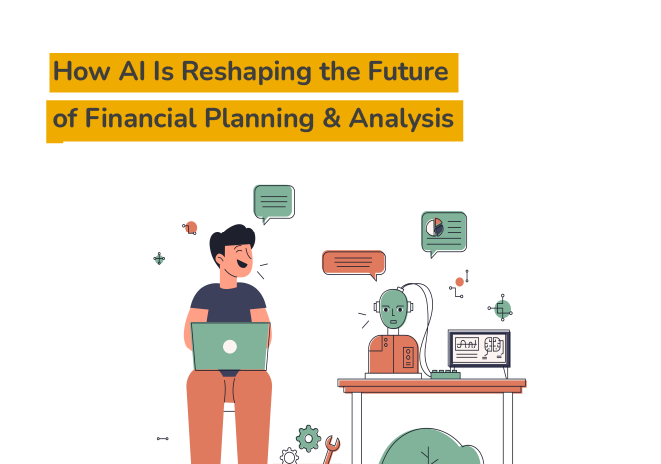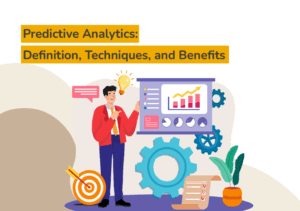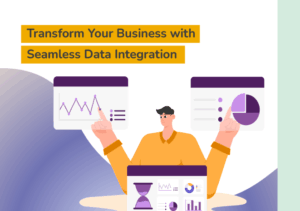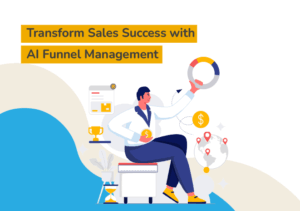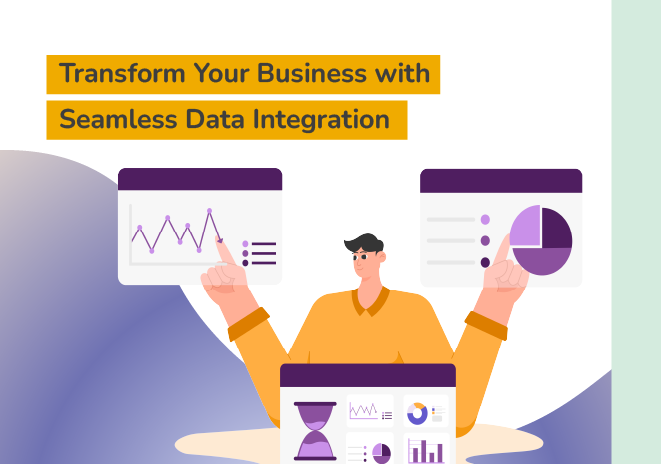What is FP&A and how is AI impacting it?
Financial Planning and Analysis (FP&A) plays a crucial role in strategic management by providing businesses with insights into their financial health and future growth prospects. With the advent of Artificial Intelligence (AI), FP&A processes are being revolutionized, dramatically enhancing efficiency and decision-making capabilities. AI-driven tools streamline financial data management, allowing for real-time analysis and more accurate forecasting. By leveraging machine learning algorithms, AI optimizes resource allocation and automates repetitive tasks, freeing up valuable time for analysts to focus on strategic planning. As AI continues to impact FP&A, it is clear that these innovations are transforming the financial landscape.
Key Takeaways
- FP&A plays a critical role in aligning financial decisions with business goals, optimized by AI.
- AI significantly enhances data analysis, forecasting accuracy, and operational efficiency in FP&A processes.
- Implementing AI requires careful selection of tools, training, and effective data privacy measures.
- AI integration transforms scenario planning and risk identification, optimizing resource allocation.
- The future of FP&A is tightly linked to AI advancements, which will redefine business strategy and financial forecasting.
- AI technologies in FP&A automate routine tasks, increasing efficiency and allowing focus on strategic initiatives.
Definition of FP&A
Financial Planning and Analysis (FP&A) is a critical business function that involves budgeting, forecasting, and analyzing financial performance to support strategic decision-making. With the integration of
Artificial Intelligence (AI), FP&A is undergoing a transformative journey, enhancing its efficiency and precision. AI tools automate routine tasks, enabling FP&A teams to focus on strategic responsibilities. Moreover, AI-driven analytics offer deeper insights, facilitating better planning and resource allocation. By leveraging AI, organizations can optimize their financial strategies, making them more agile and competitive in a rapidly changing business environment.
„FP&A is key in aligning financial decisions with business goals. AI integration enhances its precision, providing actionable insights. The automation of routine tasks by AI liberates resources, focusing them on strategic initiatives. “
The role of AI in modern business processes
In today’s
rapidly evolving business landscape, the integration of
Artificial Intelligence (AI) in Financial Planning and Analysis (FP&A) is transforming how companies operate. AI plays a pivotal role by automating complex, time-consuming processes, allowing businesses to focus on strategic planning and decision-making. It enhances efficiency and effectiveness, enabling organizations to respond with agility to market changes. Key areas like
data analysis,
predictive modeling, and
forecasting are significantly improved through AI, offering unprecedented
accuracy and
insight. This transformation not only saves costs but also directs focus towards
innovation and
growth, marking a new era in FP&A strategies.
How does AI improve financial forecasting in FP&A?
AI is revolutionizing
financial forecasting in
FP&A by leveraging
predictive analytics to transform traditional practices. It harnesses massive datasets to generate
accurate forecasts with unprecedented
speed. AI algorithms analyze past and current data trends, empowering businesses to make data-driven decisions quickly. This
accuracy and expedited processing time allow organizations to anticipate market shifts and allocate resources effectively. Additionally, AI reduces human error, ensuring more reliable financial predictions. As a result, businesses gain a competitive edge, optimizing their financial strategies to align with broader economic trends seamlessly. The benefits of AI in FP&A are transforming financial management into a smarter, insight-driven discipline.
„AI boosts financial forecasting by enhancing accuracy, accelerating decision-making, reducing errors, and offering predictive insights.“
AI-driven predictive analytics
AI-driven predictive analytics are revolutionizing
financial planning and analysis (FP&A) by enhancing the accuracy and speed of financial forecasts. With AI algorithms, businesses can now analyze vast amounts of data to predict market trends and financial outcomes with unprecedented precision. This technology minimizes human error and enables faster decision-making, making companies more agile and responsive to market changes. By leveraging AI-driven predictive analytics, firms can better manage risks, optimize investments, and ensure sustainable growth. The future of FP&A lies in harnessing AI’s power to predict, plan, and perform with enhanced efficiency and accuracy.
Benefits of accuracy and speed
AI is transforming Financial Planning and Analysis (FP&A) by enhancing the accuracy and speed of financial forecasts. Through AI-driven predictive analytics, businesses can now process vast amounts of data swiftly, enabling them to make informed decisions with greater precision. This enhanced
forecasting capability ensures businesses can anticipate and respond to market changes rapidly, improving their competitive edge. Moreover, AI facilitates real-time data analysis, providing insights that were previously inaccessible. As a result, organizations experience increased efficiency, reduced operational costs, and improved strategic planning, making AI an indispensable tool in modern FP&A.
What are the practical applications of AI in FP&A?
AI technology is revolutionizing Financial Planning & Analysis (FP&A) by automating
routine tasks and enhancing decision-making capabilities. With AI, businesses can streamline data collection and analysis, allowing teams to focus on strategic initiatives rather than mundane tasks. AI-enhanced
decision support systems provide deeper insights into financial trends, offering precise forecasts. These systems help businesses swiftly adapt to market changes, improve financial strategies, and drive efficiency. Practical applications also include AI’s ability to detect anomalies in financial data, ensuring accuracy and compliance. By integrating AI, companies can maintain a competitive edge while optimizing resources.
Automating routine tasks
Automation is revolutionizing Finance Planning and Analysis (FP&A) by streamlining routine tasks. With
AI technologies, companies can automate data entry, transaction processing, and report generation, which significantly reduces manual labor and human error. This allows finance professionals to focus more on
strategic decision-making rather than mundane, repetitive tasks. By harnessing AI capabilities, organizations achieve greater efficiency and productivity, leading to
faster turnaround times and enhanced data accuracy. The automation of routine tasks not only saves time but also enables finance teams to operate with a heightened level of
precision and insight.
Enhancing decision support systems
In the dynamic world of
Financial Planning and Analysis (FP&A), AI is becoming a pivotal element in enhancing decision support systems. By leveraging sophisticated algorithms, AI automates complex data analysis, enabling businesses to execute more informed strategic decisions. Through real-time data processing, AI not only streamlines workflows but also allows for deeper insights and accurate predictions. This results in a competitive edge, as companies can make decisions based on data-driven forecasts rather than assumptions. As AI continues to mature, its role in transforming decision-making processes will be indispensable for businesses striving for agility and efficiency.
| Benefit |
Description |
| Automation |
Streamlines data analysis tasks |
| Insights |
Delivers comprehensive, real-time insights |
| Accuracy |
Enhances predictions with precise data |
How is AI transforming scenario planning and analysis?
AI is reshaping scenario planning and analysis within FP&A by delivering more dynamic and precise what-if analysis. Through the integration of AI algorithms, businesses can simulate a multitude of potential future scenarios with remarkable accuracy and speed. This transformative power aids in optimizing resource allocation, ensuring that strategic decisions are supported by deep insights. Furthermore, AI’s predictive capabilities help in identifying risks and opportunities more effectively, thus bolstering organizational resilience. With AI, companies can move beyond traditional methods, enabling a proactive and strategic approach to complex financial challenges.
| Key Benefits of AI in Scenario Planning |
| Dynamic what-if analysis |
| Enhanced predictive accuracy |
| Advanced risk identification |
| Optimal resource allocation |
AI-enabled what-if analysis
AI-enabled what-if analysis is revolutionizing scenario planning in
financial planning and analysis (FP&A) by providing dynamic and intricate simulations. With
AI technology, businesses can swiftly generate various outcomes based on different variables, offering a more thorough and nuanced understanding of potential financial scenarios. This
proactive approach to analysis not only enhances
decision-making but also
optimizes resource allocation by identifying the most efficient courses of action. As a result, organizations can better prepare for uncertainty, adapt to changes in the market, and strategically drive growth.
Optimizing resource allocation
Optimizing resource allocation is crucial for businesses to maximize efficiency and minimize costs. With the integration of AI technologies in FP&A, organizations can leverage data-driven insights to make informed decisions. AI enhances resource allocation by providing real-time analysis, offering dynamic modeling alternatives, and predicting resource needs with greater accuracy. This ensures not only optimal deployment of resources but also the ability to pivot quickly in response to market changes. Embracing AI in resource allocation enables businesses to stay competitive while fostering sustainable growth and robust financial health.
What are the challenges of integrating AI in FP&A?
Integrating AI into Financial Planning and Analysis (FP&A) presents several
challenges. One primary concern is
data privacy and security, as AI models require access to vast amounts of sensitive information. Ensuring this data is protected becomes paramount. Another challenge lies in the demand for
skilled personnel with expertise in both AI technologies and finance to effectively deploy and manage these systems. Overcoming these hurdles is crucial for businesses to leverage AI’s full potential in transforming FP&A processes, enhancing decision-making, and maintaining
competitive advantage.
Data privacy and security concerns
In the realm of
Financial Planning and Analysis (FP&A), the integration of
Artificial Intelligence (AI) introduces significant advancements. However, it also brings
data privacy and security concerns to the forefront. As AI systems handle vast amounts of sensitive financial information, ensuring robust
data protection measures is crucial. Organizations must prioritize building secure AI frameworks to safeguard against data breaches and privacy violations, thereby maintaining trust and compliance. Addressing these concerns not only protects the organization but also strengthens its reputation in the marketplace, making secure AI integration an indispensable part of modern FP&A processes.
The need for skilled personnel
As AI continues to transform the landscape of Financial Planning and Analysis (FP&A), the demand for
skilled personnel becomes crucial. These professionals are essential to interpret complex data outputs, refine AI algorithms, and ensure seamless integration into existing processes. Skilled staff not only optimize AI efficiencies but also innovate through enhanced analytical capabilities. To thrive, businesses must invest in continuous learning and training, keeping teams abreast of evolving
AI technologies. This shift is vital to harness the full potential of AI, ensuring that FP&A functions remain strategic, agile, and competitive.
How can businesses effectively implement AI in their FP&A processes?
Implementing AI in FP&A processes requires a strategic approach to ensure success. Businesses should start by assessing their current
financial systems and identifying areas where AI can add value. Selecting the right
AI tools tailored to specific business needs is crucial. Training staff to work effectively with AI technology will facilitate a smoother transition, while fostering a culture open to innovation. Gradual integration, beginning with
pilot projects, allows for refinement before full-scale implementation. Additionally, robust
data management practices and prioritizing
data privacy will safeguard sensitive information, solidifying the AI framework effectively.
- Steps for AI integration
- Choosing the right AI tools
- Training staff
- Gradual implementation
- Prioritizing data privacy
Steps for AI integration
Integrating
AI into
FP&A processes can revolutionize financial
planning and analysis, offering unprecedented
accuracy and
efficiency. To ensure successful
implementation, businesses should begin with a comprehensive assessment of their current
capabilities and needs. Critical steps include identifying suitable AI
tools that align with specific objectives, such as improving
forecasting or automating
tasks. It’s essential to train
personnel and ensure data
security to overcome challenges. By focusing on these areas, organizations can harness the power of AI to enhance decision-making and streamline
operations. This strategic approach will drive innovation and maintain a
competitive edge.
Choosing the right AI tools
Selecting the appropriate AI tools for Financial Planning and Analysis (FP&A) can significantly propel a business’s strategic goals. These tools should cater to specific needs of the organization, ranging from predictive analytics to automation capabilities. Key factors in the selection process include integration capabilities with existing systems, ease of use, and the support available for the software. Businesses must also ensure that chosen tools uphold data security and comply with regulatory standards. As AI technology evolves, staying informed about emerging trends will help organizations make educated decisions in aligning AI tools with their FP&A objectives.
What is the future of FP&A with AI advancements?
As businesses evolve, the future of
Financial Planning and Analysis (FP&A) is being significantly shaped by advancements in
Artificial Intelligence (AI). Emerging AI technologies are set to revolutionize traditional FP&A processes, enhancing efficiency and strategic decision-making. AI-powered tools offer enhanced
predictive analytics, allowing businesses to forecast with unprecedented accuracy. Moreover, AI interventions streamline data processing, enriching the analysis and enabling more strategic planning. As integration intensifies, AI is poised to transform business strategy, driving long-term growth across industries. Adopting AI will be pivotal in maintaining competitive advantages and navigating an increasingly dynamic market landscape.
Emerging AI technologies
Emerging AI technologies are redefining the landscape of
Financial Planning and Analysis (FP&A) by introducing innovative tools that streamline business operations. These advancements enable companies to harness powerful
predictive analytics, leading to more accurate financial forecasting and improved decision-making processes. AI not only optimizes
scenario planning but also facilitates
automated routine tasks, enhancing overall efficiency. As businesses adopt these cutting-edge technologies, they can gain a competitive edge, making them better equipped to face future challenges. Ultimately, embracing AI in FP&A promises to revolutionize strategic planning and transform traditional business practices.
Long-term impact on business strategy
The long-term impact of AI on business strategy in
FP&A is profound. With the integration of
emerging AI technologies, companies can expect a transformation in how strategic decisions are made. AI facilitates enhanced data analysis, enabling organizations to harness insights for competitive advantage. By optimizing methods like
predictive analytics and
resource allocation, businesses can anticipate market trends and shifts preemptively. This evolution not only fosters
innovation and
efficiency but also supports the creation of more agile, data-driven business models. As AI continues to evolve, its strategic implications will reshape the future and redefine success in the financial planning landscape.
FAQ
What is Financial Planning and Analysis (FP&A)?
Financial Planning and Analysis (FP&A) is a crucial business function that involves budgeting, forecasting, and analyzing financial performance to support strategic decision-making.
How is AI impacting FP&A?
AI is revolutionizing FP&A by automating complex processes, enhancing forecasting accuracy, and allowing analysts to focus on strategic planning.
What are the practical applications of AI in FP&A?
AI automates routine tasks, enhances decision support systems, and provides deeper insights into financial trends through predictive analytics.
What challenges exist in integrating AI into FP&A?
Challenges include data privacy and security concerns, as well as the need for skilled personnel proficient in both AI technologies and finance.
How does AI improve financial forecasting?
AI enhances financial forecasting by utilizing predictive analytics to provide accurate, data-driven predictions and market trend analysis.
What is AI-enabled what-if analysis?
AI-enabled what-if analysis allows businesses to simulate various financial scenarios with dynamic simulations for better strategic decisions.
How can businesses effectively implement AI in their FP&A processes?
Businesses should assess current financial systems, select suitable AI tools, train staff, and ensure robust data management while prioritizing data privacy.
What is the future of FP&A with AI advancements?
The future of FP&A is being shaped by emerging AI technologies which enhance predictive analytics, streamline processes, and drive strategic growth.
What are the benefits of accuracy and speed in AI-driven FP&A?
AI-driven FP&A offers enhanced accuracy and speed in financial forecasting, allowing for timely and informed strategic planning.

